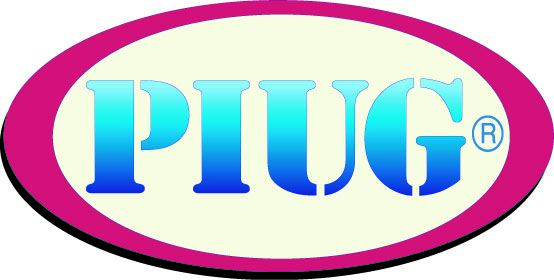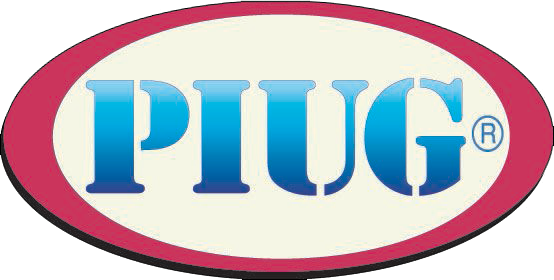Clarivate Analytics Webinar: Counting Patents is Easy, Metrics are More Difficult July 28, 2020, 3 PM EDT | 2 PM CT | 12 PM PT
Counting Patents is Easy, Metrics are More Difficult
As we all try to adapt to a “new normal,” many of the more innovative organizations are turning to patent analysis to help prepare for the future. However, one of the pitfalls of such analysis is that measuring patent volumes only tells half the story. Whether you are looking at a competitor or even your own portfolio, not all ideas in a technical field carry the same weight. Some are highly impactful; some are interesting but speculative; some are core to your strategy; others are key to a competitor’s business.
In this 30-minute webinar, we will discuss the approaches, data points and use cases for incorporating patent ‘meta-metrics’ in your work.
We will be covering the following topics:
- What types of metrics are available, and the different approaches taken by experts
- The applications for a Patent Strength Index
- Shaping your prosecution strategy, by benchmarking your position and tracking changes in your industry
- Understanding where the strength in your portfolio really lies, and where filings are no longer required
- Informing your research and innovation programs on areas of technical emergence and disruption
- The Derwent Strength Index and how we approach ranking, modelling and scoring of inventions and patented idea
Featured speaker: Ed White, Head of Analytics, IP Group, Clarivate

Webinar Replay, Copy of presentation: "Not all patents are equal; using metrics to tell the full story" (pdf, 14 p.)
Additional Information:
1. About Derwent Strength Index and Derwent's Patent Evaluation Metrics
2. Theoretical Background (a listing of major academic publications of market value of patent indicators)
1 About Derwent Strength Index
" The Derwent Strength Index assesses the number of desirable characteristics a single invention has gathered so far to date. This is then aggregated across technologies and entities to identify trends and importance. The Strength calculation uses several factors in its model, including:
•Frequency of citation, referencing impactful of the technical invention
•The breadth of geographic filing, correlating to variation in cost and investment in patent protection
•Existence and location of granted, issued patent rights, a proxy for validity as well as commitment
•The invention’s technical breadth, correlating to the range of industry which the invention maps on
In addition, the Strength Index also models the value of inventions over time as well as weighting for factors that accrue over time, e.g. existence granted patent rights.." (Clarivate Analytics (2018) Graphene. Lanscape IP Report April 2018. Section CONVENTIONS and DEFINITION, at p.40 . Available at: https://docplayer.net/145596938-Landscape-ip-report-graphene-august-2018.html. (Accessed: 27 July 2020). (See also https://clarivate.com/derwent/campaigns/graphene-patent-landscape-study/)
"The Derwent Strength Index™ calculates the strength score of each patent family in the data set, which is used to measure the different characteristics of the business behavior and the quality of the invention behind the representative. In general, the indicators that make up the strength index cover the applicant’s level of input, downstream influence, patent approval/patentability, the breadth of the technology covered by the invention, and the way in which the patent has been applied for has been prosecuted and/or asserted. [Derwent Strength Index™(德溫特強度指數)計算了資料集中每個專利家族的強度得分,用於衡量代表背後商業行為和發明的品質不同特徵。總體而言,構成強度指數的指標涵蓋了申請人的投入水平,對下游的影響力,專利核准情況/可專利性,發明所涵蓋技術的廣度以及專利的申請方式已被起訴和/或斷言。] (Chiu, Henry(邱明峻) (Clarivate Analytics) 綠色能源技術專利分析報告(Green Energy Technology Patent Analysis Report), [presentation] at p. 27, https://pcm2010.ltc.tw/pcm2010/PCM/resources/patentreport/green_energy_2.pdf
"E) Analysis of patent strength. Above, we analyzed the dimensions of patent portfolio size, regional trends of patent applications, and time trends of patent applications. Next, through the analysis of the patent Derwent Strength Index, a deeper interpretation is possible. Patent strength analysis examines the relative importance of patents in the same technical field through the evaluation of parameters such as patent influence, application area breadth, technical breadth, and grant or not, rather than simply stacking the number of patents."
See also Fig. 13 which shows an example of Derwent Strength Index use for comparison of companies portfolies (ECMO techologies): 13 重点专利实体专利组合竞争态势 or Figure 13 The competitive situation of patent portfolios of key patent entities (scroll down or search withinin an open link). Translation of Fig. 13 description: "Figure 13 visually shows the relationship between patent strength, patent portfolio size, and patent portfolio remaining life. Among them, the size of the bubble represents the size of the patent portfolio, the patent intensity increases upward [y-axis: Derwent Strenth Index (dsi), while the remaining years of the patent portfolio increases to the right [x-axis: time] ; therefore, the most favorable combination (the best combination of strength and new patents) is located in the upper right part. From this perspective, Fresenius Medical Care Deutschland GmbH, Thoratec Corp., Dräger Medical GmbH, Shanghai Microport medical Group Co Ltd., Maquet GmbH, and EUROSETS S.R.L.demonstrated the best combination of average Derwent strength and recency " [The Fig.13 has not been re-posted because copyright consideration].
(Clarivate Analytics. “A Panoramic Overview [patent landscape] of ECMO [Extracorporeal membrane oxygenation] Technology.” Section (E), [An article posted at a blog at Clarivate.com] Accessed July 27, 2020. https://clarivate.com.cn/blog/202004101/ (GoogleTranslate)).
Cf. Derwent Predictive Analytics/Patent Evaluation Metrics
"Patent Evaluation Metrics: Actionable insights on patent relative importance and strength
New, effective ways to compare clusters or portfolios of patents for value or importance can give you a competitive edge. Derwent’s Patent Evaluation metrics provide actionable insight on patent relative importance and strength. The normalized 100-point scale allows you to quickly differentiate the most interesting and valuable patents within a dataset, so you can prioritize them and drastically reduce your review time.
•Domain influence. Assess how influential this patent is to thetechnical domain to which it belongs.
•Strategic importance. Determine how important thispatent is to the entity that owns it.
•Combined patent impact. Aggregating the metrics above,understand how important thispatent is relative to any others"
(Clarivate Analytics. Derwent Innovation. Predictive Analytics: Improving patent intelligence with world-class information and cutting-edge data science. 2020. p.2).
2. Theoretical background. There has been an extensive research of others on validation of use patent counts, forward and backward citations, patent family size/geographic distribution, number of claims and IPC, etc for patent valuation for policy and managerial decisions. Below are some of the most significant articles, which lay a foundation for later research:
1. Carpenter, Mark P., Francis Narin, and Patricia Woolf. “Citation Rates to Technologically Important Patents.” World Patent Information 3, no. 4 (October 1, 1981): 160–63. GoogleScholar [author's copy] (433 citations) ("The purpose of this study was to determine whether the average number of citations received by issued U.S. patents from subsequently issued U.S. patents are higher for patents associated with important technological advances than for a group of randomly selected patents") [This is a pioneering article]
2. Narin, Francis, Elliot Noma, and Ross Perry. “Patents as Indicators of Corporate Technological Strength.” Research Policy 16, no. 2 (August 1, 1987): 143–55. DOI; GoogleScholar [an author's copy] (912 citations) (...This paper examines the links between corporate patent and patent citation data, and several other indicators of corporate performance: changes in sales and profits, research and development budgets, scientific productivity, and expert opinions of company technological strength.)
4.Griliches, Zvi (1990). “Patent Statistics as Economic Indicators: A Survey.” Journal of Economic Literature, 28, 1661–1707. GoogleScholar (8197 citations) [Sec. [2]...The second problem is fundamentally much harder ... It refers to the obvious fact that patents differ greatly in their technical and economic significance. Many of them reflect minor improvements of little economic value. Some of them, however, prove extremely valuable. Unfortunately, we rarely know which are which and do not yet have a good procedure for “weighting” them appropriately. I shall discuss the available scraps of evidence on this topic in Section [5] of this survey.]
5. Trajtenberg, Manuel. “A Penny for Your Quotes: Patent Citations and the Value of Innovations.” The RAND Journal of Economics 21, no. 1 (1990): 172–87. DOI; GoogleScholar (3121 citations) (" The use of patents in economic research has been seriously hindered by the fact that patents vary enormously in their importance or value, and hence, simple patent counts cannot be informative about innovative output. The purpose of this article is to put forward patent counts weighted by citations as indicators of the value of innovations, thereby overcoming the limitations of simple counts.")
6. Lerner, Joshua. “The Importance of Patent Scope: An Empirical Analysis.” The RAND Journal of Economics 25, no. 2 (1994): 319–33. DOI; Google Scholar, (1216 Citations) “This article examines the impact of patent scope on firm value. I develop a proxy for patent scope based on the International Patent Classification scheme.”
7. Harhoff, Dietmar, Francis Narin, F. M. Scherer, and Katrin Vopel. “Citation Frequency and the Value of Patented Inventions.” The Review of Economics and Statistics 81, no. 3 (August 1, 1999): 511–15. DOI; GoogleScholar (1577 citations) "Through a survey, private economic value estimates were obtained on 964 inventions made in the United States and Germany and on which German patent renewal fees were paid to full-term expiration in, 1995. A search of subsequent U.S. and German patents yielded counts of citations to those patents. Patents renewed to full-term were significantly more highly cited than patents allowed to expire before their full term. The higher an invention's economic value estimate was, the more the patent was subsequently cited."
8. Hall, Bronwyn H, Adam B Jaffe, and Manuel Trajtenberg. “Market Value and Patent Citations: A First Look.” Working Paper. Working Paper Series. National Bureau of Economic Research, June 2000. DOI: GoogleScholar (961 citations) (... This paper explores the economic meaning of these citation-based patent measures using the financial market valuation of the firms that own the patents. Using a new and comprehensive dataset containing over 4800 U. S. Manufacturing firms and their patenting activity for the past 30 years, we explore the contributions of R&D spending, patents, and citation-weighted patents to measures of Tobin's Q for the firms. We find that citation-weighted patent stocks are more highly correlated with market value than patent stocks themselves and that this fact is due mainly to the high valuation placed on firms that hold very highly cited patents.)
9. Harhoff, Dietmar, Frederic M Scherer, and Katrin Vopel. “Citations, Family Size, Opposition and the Value of Patent Rights.” Research Policy 32, no. 8 (September 1, 2003): 1343–63. DOI; GoogleScholar (1518 citations) (...Our results suggest that the number of references to the patent literature as well as the citations a patent receives are positively related to its value. ...Patents which are upheld in opposition and annulment procedures and patents representing large international patent families are particularly valuable.)
10. Hall, Bronwyn H., Adam Jaffe, and Manuel Trajtenberg. “Market Value and Patent Citations.” The RAND Journal of Economics 36, no. 1 (2005): 16–38. GoogleScholar (3514 citations) (We explore the usefulness of patent citations as a measure of the "importance" of a firm's patents, as indicated by the stock market valuation of the firm's intangible stock of knowledge. Using patents and citations for 1963-1995, we estimate Tobin's q equations on the ratios of R&D to assets stocks, patents to R&D, and citations to patents. We find that each ratio significantly affects market value, with an extra citation per patent boosting market value by 3%. Further findings indicate that "unpredictable" citations have a stronger effect than the predictable portion, and that self-citations are more valuable than external citations. "
Update 7/28/2020: Links added to Articles #1&2 for copies on Academia.edu (not captured by GoogleScholar]
Update 8/2/2020 A link to webinar replay and copy of presentation (pdf) has been added; Quotation on Derwent's Patent Evaluation Metrics has been added.
 Search
Search Community
Community Job Board
Job Board
